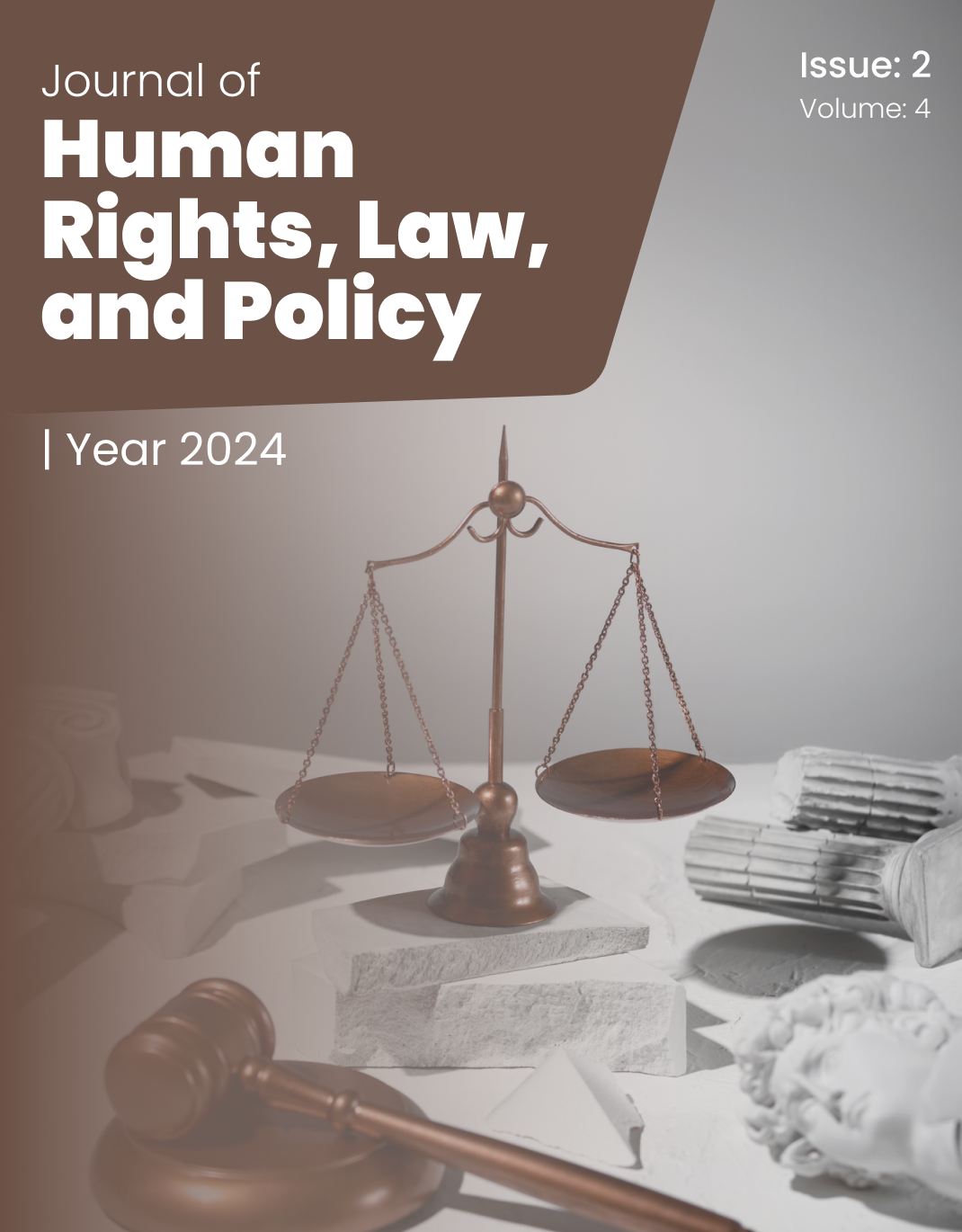Exploring the Gaps in Legal Protections for Invisible Disabilities
Keywords:
Invisible disabilities, legal recognition, procedural justice, disability rights, qualitative research, Iran, psychosocial impact, legal exclusionAbstract
This study aimed to explore how individuals with invisible disabilities in Tehran experience and navigate legal recognition, protection, and enforcement, highlighting systemic gaps and psychosocial consequences within Iran’s legal framework. A qualitative research design was employed using semi-structured interviews to capture the lived experiences of individuals with self-identified invisible disabilities, including psychiatric, neurological, and chronic conditions. Fifteen participants were recruited through purposive sampling in Tehran. Interviews were conducted until theoretical saturation was reached, lasting between 45 and 75 minutes, and were transcribed verbatim. Data were analyzed thematically using NVivo software, applying Braun and Clarke’s six-phase framework. Open, axial, and selective coding were used to identify key themes and subthemes reflecting participants’ legal experiences. Three overarching themes emerged: (1) legal recognition and definition gaps, including the exclusion of invisible disabilities from statutory definitions and standardized assessments; (2) institutional barriers to enforcement, such as bureaucratic delays, interagency fragmentation, and discriminatory attitudes among legal staff; and (3) psychosocial impacts of legal invisibility, including emotional distress, advocacy fatigue, fear of disclosure, and withdrawal from legal systems. Participants also reported developing alternative strategies for resilience, such as peer advocacy, informal networks, and reframing of disability identity. These findings underscore how the structural invisibility of non-apparent disabilities produces legal exclusion and social disempowerment. The study reveals significant deficiencies in the Iranian legal system's recognition and support for individuals with invisible disabilities. Legal definitions, procedural systems, and professional practices must be reformed to accommodate non-visible impairments through inclusive policies, standardized evaluations, and disability rights training for legal professionals. Amplifying the voices of those affected is essential to advancing equitable justice and fulfilling the commitments of the CRPD.
Downloads
References
Beatty, J. E., & Joffe, R. (2006). Invisible disabilities: A qualitative exploration of employee perspectives. Journal of Workplace Behavioral Health, 21(2), 89–104. https://doi.org/10.1300/J490v21n02_07
Beatty, J. E., Baldridge, D. C., Boehm, S. A., Kulkarni, M., & Colella, A. (2019). On the treatment of persons with invisible disabilities: A review of the literature and agenda for future research. Journal of Management, 45(1), 317–344. https://doi.org/10.1177/0149206316675726
Campbell, F. K., & Oliver, M. (2013). Disability politics: Understanding our past, changing our future. Routledge.
Clair, J. A., Beatty, J. E., & MacLean, T. L. (2005). Out of sight but not out of mind: Managing invisible social identities in the workplace. Academy of Management Review, 30(1), 78–95. https://doi.org/10.5465/amr.2005.15281431
Dudley-Marling, C. (2004). The social construction of learning disabilities. Journal of Learning Disabilities, 37(6), 482–489. https://doi.org/10.1177/00222194040370060201
Fitzgerald, M. H., & Paterson, K. A. (2020). Invisible disabilities. In J. H. Stone & M. Blouin (Eds.), International Encyclopedia of Rehabilitation. Center for International Rehabilitation Research Information and Exchange.
Fricker, M. (2007). Epistemic injustice: Power and the ethics of knowing. Oxford University Press.
Goodley, D. (2014). Dis/ability studies: Theorising disablism and ableism. Routledge.
Grear, A. (2010). Redirecting human rights: Facing the challenge of corporate legal humanity. Palgrave Macmillan.
Jones, N., Shakespeare, T., & Bright, T. (2021). Disability and the global South: The critical importance of social justice. Disability & Society, 36(4), 540–545. https://doi.org/10.1080/09687599.2021.1907545
Kattari, S. K., Lavery, A., & Hasche, L. (2018). Applying a social model of disability across the life span. Journal of Human Behavior in the Social Environment, 28(4), 442–455. https://doi.org/10.1080/10911359.2017.1422947
Kerschbaum, S. L., Eisenman, L. T., & Jones, J. M. (2017). Negotiating disability: Disclosure and higher education. Michigan State University Press.
Mehrabi, F., Moradi, M., & Khodadadi, H. (2020). Disability and legal protections in Iran: Challenges and opportunities. Iranian Journal of Social Studies, 14(1), 65–83.
Moghaddari, H., Ehsani, M., & Rouhani, S. (2021). Legal barriers to inclusive employment of persons with disabilities in Iran. Journal of Disability Policy Studies, 31(4), 287–298.
Mulvany, J. (2000). Disability, impairment or illness? The relevance of the social model of disability to the study of mental disorder. Sociology of Health & Illness, 22(5), 582–601. https://doi.org/10.1111/1467-9566.00221
Pothier, D., & Devlin, R. (Eds.). (2006). Critical disability theory: Essays in philosophy, politics, policy, and law. UBC Press.
Santuzzi, A. M., Waltz, P. R., Finkelstein, L. M., & Rupp, D. E. (2014). Invisible disabilities: Unique challenges for employees and organizations. Industrial and Organizational Psychology, 7(2), 204–219. https://doi.org/10.1111/iops.12134
Silvers, A., & Francis, L. P. (2017). Justice through trust: Disability and the “outlier problem” in social contract theory. Ethics, 122(1), 40–66.
United Nations. (2006). Convention on the Rights of Persons with Disabilities (CRPD). https://www.un.org/disabilities/documents/convention/convoptprot-e.pdf
Vickers, M. H. (2012). Invisible disability and workplace bullying: Stories of marginalization and resistance. Routledge.
von Schrader, S., Malzer, V., Erickson, W., & Bruyère, S. (2014). Emerging employment issues for people with disabilities: Disability disclosure, leave as a reasonable accommodation, and the ADAAA. Rehabilitation Research, Policy, and Education, 28(1), 31–44.
Yeo, R. (2003). Chronic poverty and disability. Chronic Poverty Research Centre Working Paper, 4.
Published
Submitted
Revised
Accepted
Issue
Section
License

This work is licensed under a Creative Commons Attribution-NonCommercial 4.0 International License.

